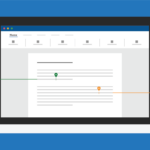Effective administration and management of a Voice over Internet Protocol (VoIP) system are essential to ensure optimal performance and functionality. VoIP phone dashboards provide administrators with a centralized interface to monitor, configure, and troubleshoot the system. To maximize the benefits of these dashboards, it’s crucial to customize them according to the specific needs of your organization. In this article, we will explore how administrators can tailor VoIP system dashboards to their requirements, enhancing efficiency and control.
Identify Key Metrics and KPIs
Before customizing your VoIP system dashboard, identify the key metrics and Key Performance Indicators (KPIs) that matter most to your organization. These metrics may include call volume, call quality, call setup times, and resource utilization. Understanding your priorities will guide the customization process.
Choose the Right Dashboard Tools
Select a dashboard tool or platform that aligns with your customization goals. Popular choices include VoIP management software like SolarWinds VoIP & Network Quality Manager, Cisco Unified Communications Manager, or custom-built dashboards using tools like Grafana or Tableau. Ensure that the chosen tool allows for flexibility and integration with your VoIP system.
Design a User-Friendly Layout
A well-organized dashboard is essential for efficient administration. Design a user-friendly layout that presents information logically. Group related metrics together and use clear labels and visual elements such as charts and graphs to make data interpretation easier.
Customize Widgets and Data Visualizations
Most dashboard tools offer widgets or data visualization components that you can customize. Configure these widgets to display the metrics and KPIs you identified in step 1. You can create widgets for call logs, call quality reports, network performance, and more. Adjust the data visualization settings to match your preferences.
Set Thresholds and Alerts
Customize alert thresholds to notify administrators when specific metrics exceed predefined limits. For example, you can set an alert to trigger when call latency goes above a certain threshold. Fine-tune these thresholds based on your organization’s tolerance for performance variations.
Create User-Specific Dashboards
Different roles within your organization may require access to different sets of data. Customize dashboards for specific user groups or roles. For instance, a network administrator may need visibility into network-related metrics, while a customer support manager may require call volume and customer satisfaction data. Tailoring dashboards to these roles improves efficiency and ensures relevant information is readily available.
Implement Real-Time Monitoring
Customize your VoIP dashboard to provide real-time monitoring capabilities. Real-time data updates enable administrators to respond promptly to issues and outages. Ensure that your chosen dashboard tool supports real-time data streaming and that you configure it to refresh data at intervals that match your monitoring needs.
Enable Historical Data Analysis
In addition to real-time monitoring, customize your dashboard to include historical data analysis. Historical data allows administrators to identify trends, patterns, and recurring issues. Consider implementing data retention policies to ensure that historical data is available for as long as needed.
Implement Access Controls and Permissions
Security is paramount when customizing VoIP system dashboards. Implement access controls and permissions to restrict dashboard access to authorized personnel only. Ensure that administrators have the necessary permissions to configure and customize the dashboard, while other users have read-only access or access limited to their specific roles.
Implement Integration with Other Systems
To further enhance the utility of your customized VoIP system dashboard, consider integrating it with other systems and tools used within your organization. Integration can provide a more comprehensive view of your communication environment and streamline administrative tasks.
Integrating your VoIP dashboard with Customer Relationship Management (CRM) software, for instance, can enable seamless access to customer information during calls, improving customer service and sales interactions. Additionally, integration with ticketing systems can automate the creation of support tickets when certain call quality thresholds are breached, ensuring that issues are addressed promptly.
Embrace Mobility and Remote Access
In today’s increasingly mobile and remote work environment, administrators often need access to their VoIP system dashboards while on the go. Customize your dashboard to be mobile-responsive, allowing administrators to monitor and manage the VoIP system from smartphones and tablets. This flexibility ensures that administrators can respond to critical issues even when not in the office.
Remote access capabilities are particularly valuable for distributed teams and remote support scenarios. Ensure that your dashboard customization accounts for the need to securely access and manage the VoIP system from different locations and devices.
Leverage Advanced Analytics and Reporting
Customized VoIP system dashboards can provide more than just real-time monitoring. They can also serve as powerful tools for advanced analytics and reporting. Administrators can generate custom reports and analyze historical data to gain deeper insights into call patterns, call quality trends, and user behavior.
By incorporating advanced analytics and reporting features into your customized dashboard, you can uncover valuable insights that inform strategic decisions. For example, you can identify peak call times, assess the impact of recent system changes, and evaluate the performance of different VoIP providers or call routing strategies.
Conclusion
In conclusion, customizing VoIP system dashboards for administrators is a crucial step in optimizing the management and performance of your VoIP infrastructure. By tailoring dashboards to your organization’s specific needs, you empower administrators with the tools and insights necessary to efficiently monitor, troubleshoot, and improve your VoIP communication system. Keep in mind that customization is an ongoing process, and regular reviews and updates of your dashboards will ensure they continue to meet your evolving requirements.








